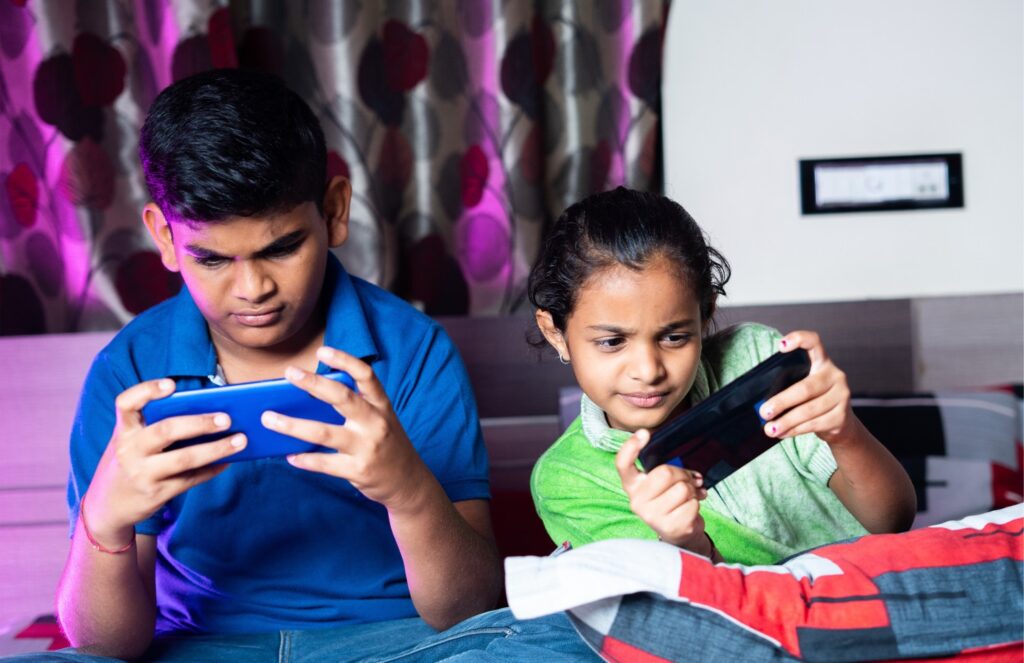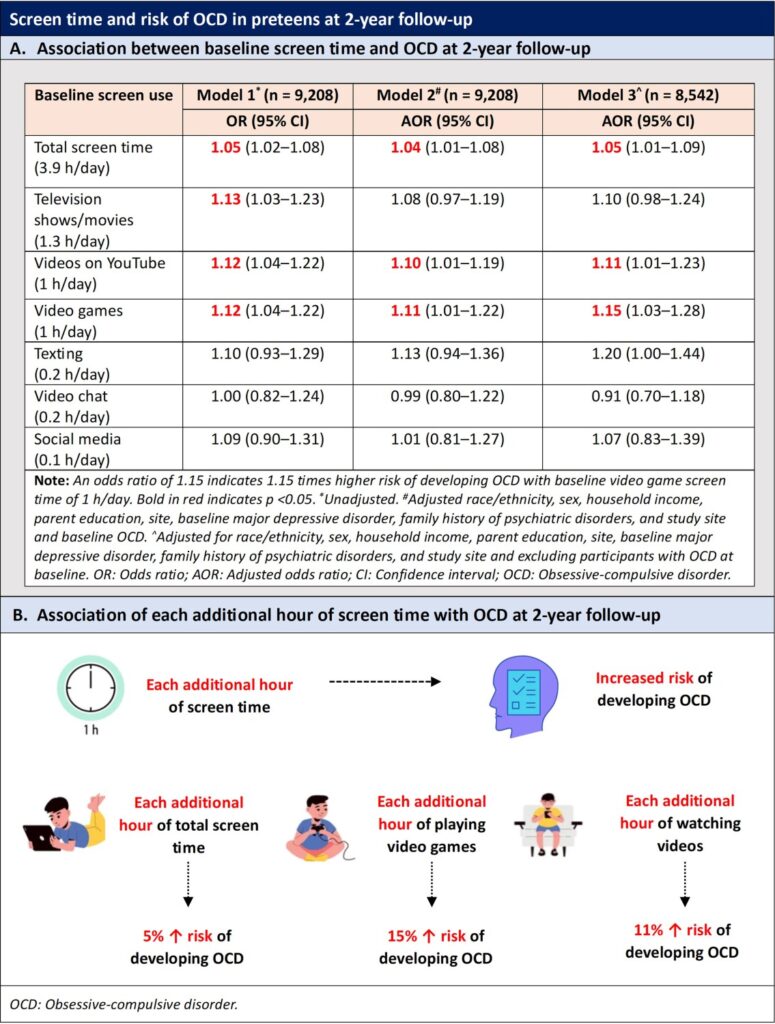
A study by Nagata JM et al., recently published in the “Journal of Adolescent Health” reported that longer total screen time is potentially associated with new-onset obsessive-compulsive disorder (OCD) in 9 to 10-year-old children. Moreover, video games and watching videos were the specific screen modalities that were most strongly associated with new-onset OCD.
This prospective cohort study analyzed data from the Adolescent Brain Cognitive Development (ABCD) study including preteens (n = 9,208; age 9–10 years) to evaluate the relationship between various forms of screen time (television, video games, texting, watching videos, video chat, and social networking) and subsequent diagnosis of OCD at the 2-year follow-up period. The screen time was assessed using the ABCD Youth Screen Time Survey. The associations between baseline self-reported screen time (exposure) and OCD at 2-year follow-up (outcome) were investigated by multiple logistic regression analyses based on the Kiddie Schedule for Affective Disorders and Schizophrenia (used for the assessment of OCD). The study results are summarized below:
- The preteens enrolled in the study reported 3.9 hours of screen time/day on an average, on various types of platforms at baseline. At 2-year follow-up, 4.4% of the preteens had developed new-onset OCD.
- At 2-year follow-up, preteens with OCD reported higher screen time per day compared with those without OCD (p<0.05):
- Total screen time: 4.36 vs. 3.85 h
- Television shows/movies: 1.43 vs. 1.28 h
- Videos (YouTube): 1.18 vs. 1.01
- Video games: 1.17 vs. 1.02
3. Baseline total screen time, watching television shows/movies, watching videos, and playing video games were associated with OCD at the 2-year follow-up (Graphic A).
4. Moreover, there were higher odds of developing OCD at 2-year follow-up with each additional hour of total screen time (1.05 times higher odds), playing video games (1.15 times higher odds), and watching videos (1.11 times higher odds) (Graphic B).
5. Texting, video chat, and social media were not commonly linked with OCD; however, this may possibly be due to lower usage rates of these forms of screen modes by the preteens. This highlights the fact that specific forms of screen use may be more relevant to OCD development than total screen time.

Clinical implications
- The findings of this study would be useful to increase awareness about the link between longer screen time and development of OCD. Video games and watching videos offer focus points for future research and interventions for preventing OCD in preteens, given that they had the strongest associations between screen time and OCD.
- This is a novel study adding insights into the inadequate literature base by examining association of different forms of screen use with the development of new-onset OCD in preteens, an age group that has been neglected in earlier studies, as reflected by the current literature on screen time and risk of OCD.
- This study has many implications within the field of public and clinical healthcare, given that preteens is a critical time period, with respect to the onset of OCD. Moreover, the findings are also relevant during recent dramatic rise in screen time of adolescents throughout the COVID-19 pandemic.
(Source: Nagata JM, Chu J, Zamora G, Ganson KT, Testa A, Jackson DB, Costello CR, Murray SB, Baker FC. Screen time and obsessive-compulsive disorder among children 9-10 years old: A prospective cohort study. J Adolesc Health. 2023;72(3):390-96.)
